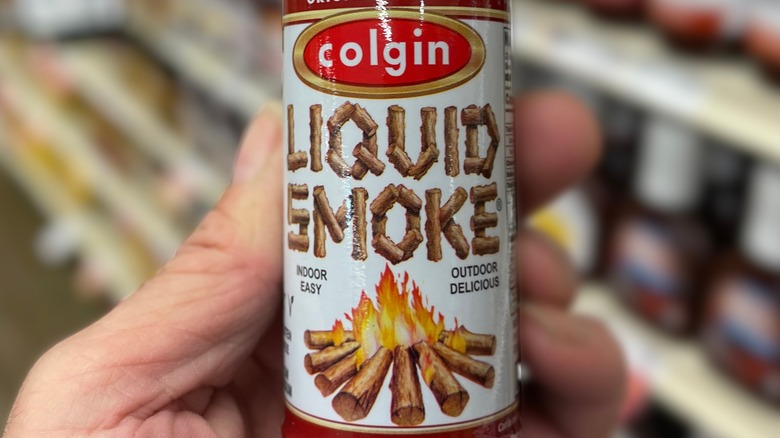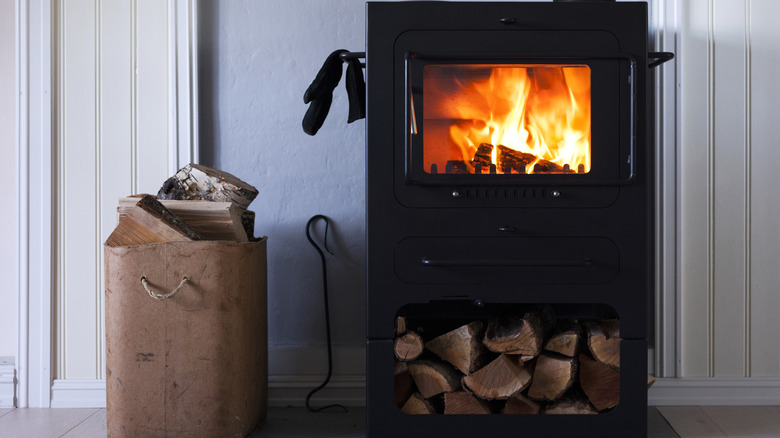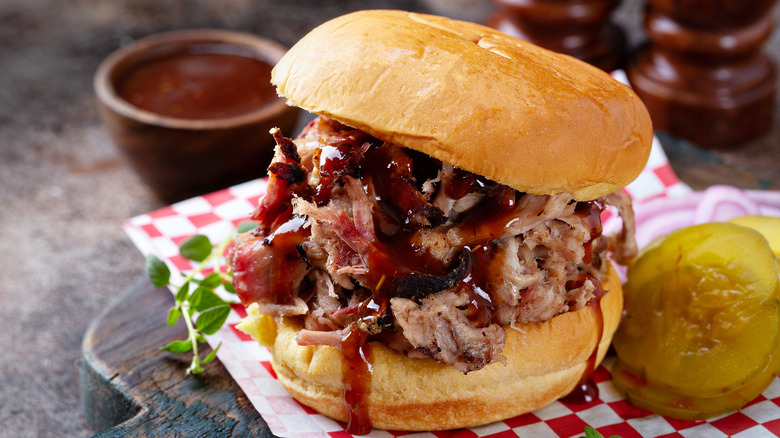What Actually Makes Liquid Smoke So Smoky?
Flavor, as it is most commonly understood, can be added to your dinner by generously applying seasonings and sauces. While salt and pepper are sufficient in certain circumstances, some meals call for a considerably more complicated list of ingredients. For example, if you're making chocolate chip cookies, you'll likely add a delicate pour of vanilla extract to the batter to add depth to the sweet treat.
Vanilla extract is made of vanilla, as you might have guessed –- specifically, an alcohol and water solution is used to draw the flavor from vanilla beans. While vanilla is undoubtedly the most instantly recognizable of the flavor extracts, there are countless flavors that have been bottled for chefs and bakers. Many fruits have been treated to similar distillation processes, as well as other natural flavors, like maple, or butter. Though often relegated to the dessert sphere as a result of their bright flavors, extracts can also be used in savory dishes. Liquid smoke brings a bold barbecue flavor to your food, and it is extracted from a surprising source.
The science behind liquid smoke
The practice of using smoke to cook and preserve meats has been around since the beginning of human civilization. Burning wood imparts flavor to the meat. However, the majority of food nowadays is not prepared over a raging fire, and as such, some of that arguably ancestral flavor is lost.
In the late 1800s, Ernest H. Wright developed a new technology that allowed chefs operating without wood-burning appliances to reintroduce smoke to their dishes. During his childhood, Wright braved searing temperatures to taste the liquid dripping from the stove pipe, which tasted like smoke. Inspired by the memory, he invented liquid smoke in 1895.
There is a fascinating process behind every bottle of liquid smoke. Pieces of wood are slowly burned, and the smoke is immediately channeled into a cooling unit, which results in a thick extraction of smoky sludge. After the excess residue is stripped away, you're left with a deceptively thin yet nonetheless flavor-packed black liquid.
Liquid smoke and its applications
As the process of making a bottle of liquid smoke might indicate, the extract has an incredibly potent flavor. As such, you should exercise caution when using it in your next meal. If you add just a touch too much, you could utterly ruin your meal.
Nevertheless, a dash of liquid smoke can be a useful cooking hack. For example, if you have a hankering for a kalua pork sandwich, but (unlike the dish's Hawaiian inventors) your barbecue is buried under a foot-and-a-half of snow, you can use liquid smoke to give your pulled pork a classic charred flavor. Liquid smoke is at its best when you use a moderate splash in marinades, brines, and sauces, so your dish has a hint of barbecue taste but not an overwhelming artificial burn. If you want a Halloween snack that is both smoky and spooky, try these smoky Idaho potato eyes.


